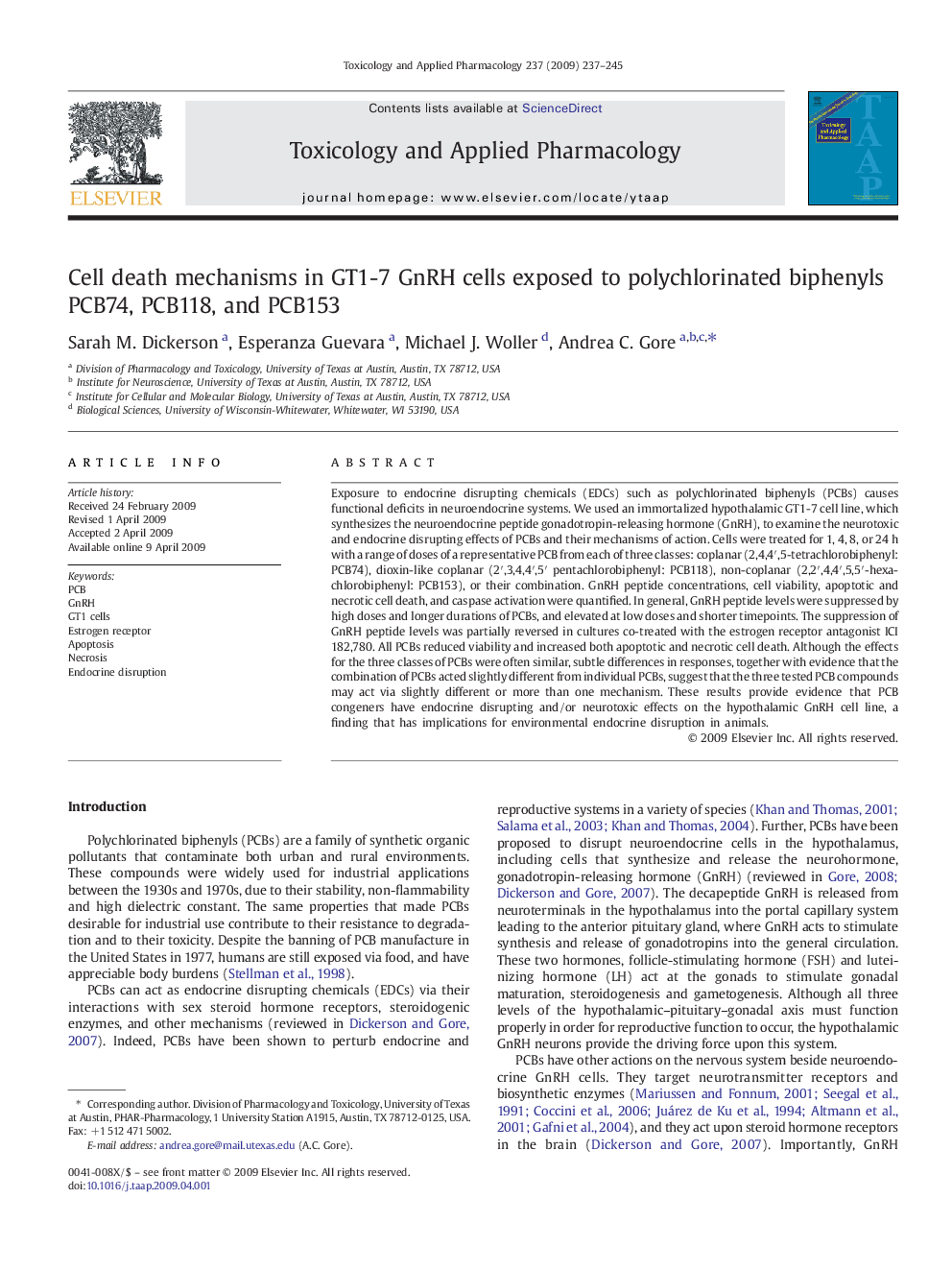| Article ID | Journal | Published Year | Pages | File Type |
|---|---|---|---|---|
| 2570339 | Toxicology and Applied Pharmacology | 2009 | 9 Pages |
Abstract
Exposure to endocrine disrupting chemicals (EDCs) such as polychlorinated biphenyls (PCBs) causes functional deficits in neuroendocrine systems. We used an immortalized hypothalamic GT1-7 cell line, which synthesizes the neuroendocrine peptide gonadotropin-releasing hormone (GnRH), to examine the neurotoxic and endocrine disrupting effects of PCBs and their mechanisms of action. Cells were treated for 1, 4, 8, or 24Â h with a range of doses of a representative PCB from each of three classes: coplanar (2,4,4â²,5-tetrachlorobiphenyl: PCB74), dioxin-like coplanar (2â²,3,4,4â²,5â² pentachlorobiphenyl: PCB118), non-coplanar (2,2â²,4,4â²,5,5â²-hexachlorobiphenyl: PCB153), or their combination. GnRH peptide concentrations, cell viability, apoptotic and necrotic cell death, and caspase activation were quantified. In general, GnRH peptide levels were suppressed by high doses and longer durations of PCBs, and elevated at low doses and shorter timepoints. The suppression of GnRH peptide levels was partially reversed in cultures co-treated with the estrogen receptor antagonist ICI 182,780. All PCBs reduced viability and increased both apoptotic and necrotic cell death. Although the effects for the three classes of PCBs were often similar, subtle differences in responses, together with evidence that the combination of PCBs acted slightly different from individual PCBs, suggest that the three tested PCB compounds may act via slightly different or more than one mechanism. These results provide evidence that PCB congeners have endocrine disrupting and/or neurotoxic effects on the hypothalamic GnRH cell line, a finding that has implications for environmental endocrine disruption in animals.
Related Topics
Life Sciences
Environmental Science
Health, Toxicology and Mutagenesis
Authors
Sarah M. Dickerson, Esperanza Guevara, Michael J. Woller, Andrea C. Gore,
